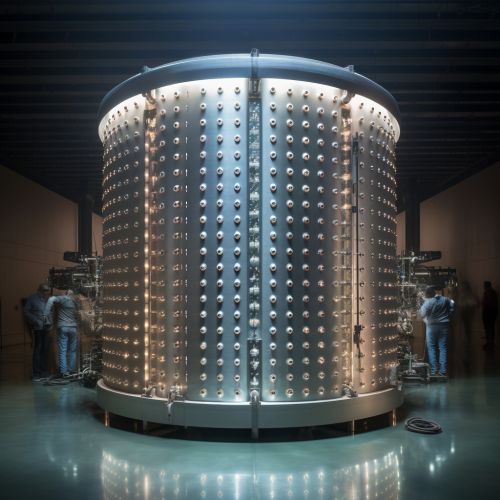Super-Kamiokande
Overview
Super-Kamiokande (Super-K) is a neutrino observatory located in Hida, Japan. It is a large-scale experiment constructed to detect and study neutrinos from various sources, including the Sun, supernovae, and the atmosphere. The observatory is located 1,000 meters underground in the Mozumi Mine of the Kamioka Mining and Smelting Co. The detector is a cylindrical stainless steel tank that is 41.4 meters tall and 39.3 meters in diameter holding 50,000 tons of ultra-pure water.


History and Development
The Super-Kamiokande project was proposed in 1983 as an extension of the original KamiokaNDE (Kamioka Nucleon Decay Experiment) project. The construction of the Super-K detector began in April 1991 and was completed in January 1996. The first neutrino events were detected in April 1996, shortly after the detector was filled with water.
Detector Design
The Super-Kamiokande detector is a Cherenkov detector that uses ultra-pure water as both the target material and the Cherenkov radiator. The inner detector, which is the main part of the detector, is surrounded by an outer detector that serves as a cosmic ray veto shield. The inner detector is equipped with about 11,200 photomultiplier tubes (PMTs), while the outer detector has about 1,800 PMTs.
Research and Discoveries
Super-Kamiokande has made significant contributions to the field of neutrino physics. It provided the first definitive evidence for neutrino oscillation, which implies that neutrinos have mass. This discovery was awarded the 2015 Nobel Prize in Physics. Super-K also observed neutrinos from SN 1987A, a supernova that occurred in the Large Magellanic Cloud.
Future Prospects
The Super-Kamiokande collaboration has proposed an upgrade to the detector, known as Hyper-Kamiokande. This new detector would be much larger than Super-K and would allow for more precise measurements of neutrino oscillation parameters.
